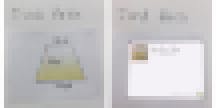Take a look at the 12-year-olds around you, and you’ll be hard-pressed to find one without a device in front of his or her face. Pokémon Go. Zombies Everywhere. Kids love these hit apps because they use augmented reality to add graphics and sounds to their real-life location, creating an immersive—and addictive—experience. Catching a Pokémon that appears to be zipping past your bus stop is just more fun than thumbing through traditional trading cards. But can teachers use this technology to engage students in the classroom, not only to entertain but personalize instruction?
This is where Aurasma comes in. Aurasma is an online app that allows students to scan an image with their device and be redirected to a linked video, picture, or website. In my math class, I use Aurasma during review activities, where students rotate through posted equations with devices in hand. Aurasma allows me to make these sessions more engaging while also giving students individual attention. Here’s how it works:

Before the review, I create a short video for each assigned problem, one minute at the most. I use the program Doceri to make the videos, though any recording tool will do. Once I’ve finished my videos, I use Aurasma to create a “trigger.” Triggers work like QR codes: when a student scans one with a phone or tablet, they’re brought to the material of my choice. But instead of a standard QR code, I can create whatever triggers I like. For example, when solving for the area of geometric figures, I created triggers using the shapes found in the practice problems. With more numerical problems, I will find a related picture that can serve as my trigger.

The triggers bring students to the appropriate video on their devices. The videos have just enough information to lead students in the right direction, providing a hint, a formula, or first step. I still need to circulate and answer questions, but many students are able to use the videos to get themselves started on a problem without the one-on-one attention.
The benefits of Aurasma have varied depending on the skill level of my students. My high-level students don’t need many videos. Despite this, most students still scan at least a few videos throughout the activity, often to double check they’ve used the correct method to solve the problem.

With higher-need classes, the review activity can be more daunting, but Aurasma makes supporting students more manageable. Allowing the students to get help as they need it allows me to focus my attention on specific students, while still keeping the whole group activity flowing. My ELL and Special Ed students relish the opportunity to work completely on their own. The confidence boost is especially important for these students, as many will scan a problem or two at the beginning of class, and then continue the activity without needing additional help.
Aurasma also makes learning more fun. Students enjoy doing any activity with tablets, but it’s the augmented reality that is particularly engaging. Scanning an image and having videos appear instantly makes learning more interactive, adding a little bit of fun to standard practice problems. It’s also flexible. Regardless of content, teachers can scan a picture from the textbook and link it to a video, whether from youtube, a documentary or one of their own making. And if it sounds time consuming at first, I assure you you’ll become a pro in no time. I have gotten comfortable with the app by starting small and creating short videos. After a few years of practice, I’ve built an entire library of videos within the app that I am able to utilize again and again, making the process not only useful but easy.


